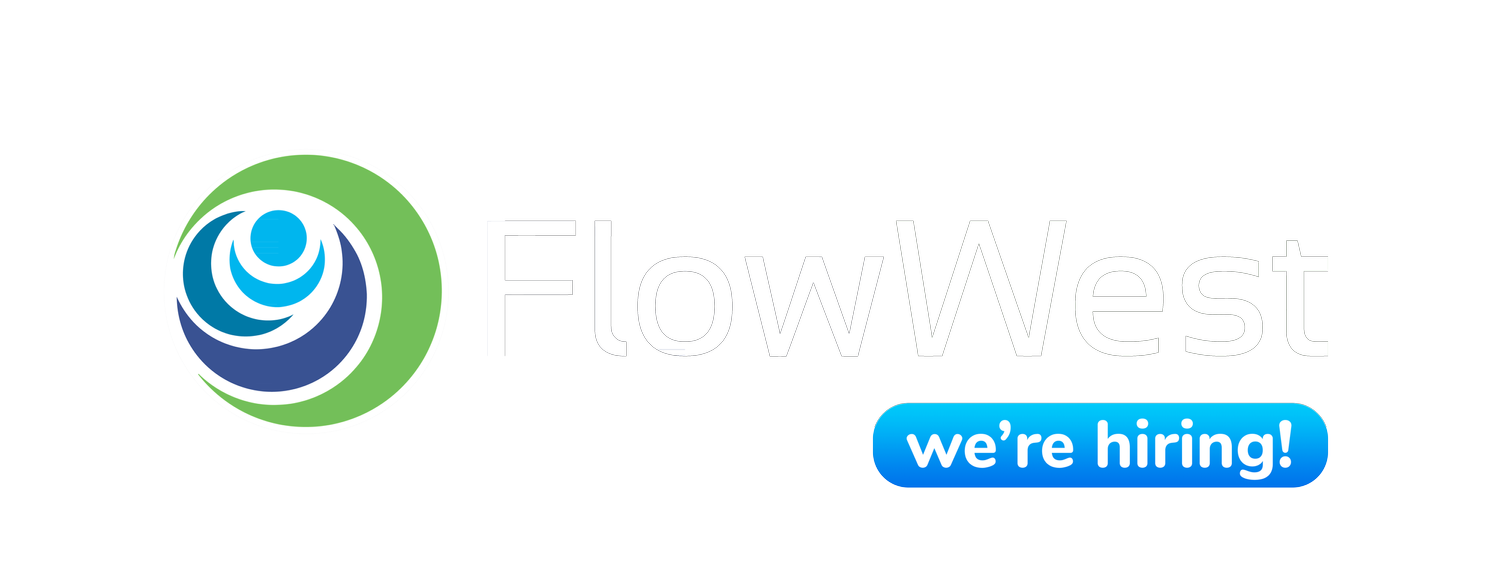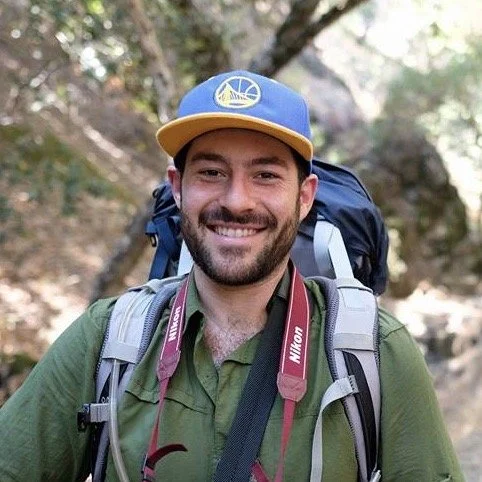Welcome to Go With The Flow, a new FlowWest company blog series. Our bimonthly posts will feature sneak peeks of projects currently under way and a bit more about our hardworking employees.
Jake Kramarz is an Associate Hydrologist and has been with FlowWest since the beginning of 2022. As one of our newer employees, we wanted to sit down with him and pick his brain about a few exciting projects and his career trajectory.
Always on the move
Jake is passionate about hydrology, the Warriors, and hiking around the Bay Area.
How did you get into the environmental services sector?
I did a lot of outdoorsy activities as a kid; I hiked a lot, went to summer camp, and had environmentally-friendly parents. When I got to college I wanted to do something related to the environment. I landed on an Earth Sciences and Environmental Geology degree at UC Santa Cruz. I realized soon after graduating that it was impossibly hard to land the job I wanted without a Masters. So off to the Masters program I went. But I had to decide what to study – meteorology was too much chemistry, and I’d heard that whatever you do your masters thesis in is what you “are”. If you do your thesis on the structure of tornadoes, you will be “the tornado guy”.
I grew up in Marin county, where there was lots of flooding. All my grade schools flooded. Because of this, I chose Hydrology, got my Masters, and then looked around for work at water resources consulting companies. Nine months after my graduate degree I got hired in 2016, but only lasted eight months due to a lack of work. After a couple months, I found a new job at a very small company, just two other people. I stayed with this company for over four years, but yearned for bigger projects and more co-workers to learn from and hone my skills with, especially in AutoCAD Civil 3D.
My previous employer had put me through a couple AutoCAD and Civil 3D introductory courses, however, mimicking natural topography is hard to design the way civil engineers design roads. My current colleague, Cristen, teaches AutoCAD in a great way, with lots of rules and processes, and has helped me acquire new skills for design work. First, you go out and do a topographic survey to capture existing conditions, and then build digital elevation models (DEMs) in Civil 3D. These existing conditions DEMs get sent to Bethany in the modeling team, who runs hydrologic models to see what water flows do (or are expected to do) with different flow sizes. We use that info to build design DEMs, look at whatever we want to design for the project like bank/bed stabilization and creek restoration. It can also be used for helping with fish passage or restoring a degraded creek.
What are some of your favorite projects going on currently?
One of our founders, Anthony, had been put in contact with someone in Diablo, CA with a small creek stabilization / restoration project. Anthony asked if I wanted to be the project manager. This allows me to get to do a bit of everything - design, survey outside with Nick, client interface, and work with teammates like Ari who is the permitting environmental compliance specialist.
Jake’s recent project – building up the creek to prevent erosion and fixing the driveway.
Private projects move much faster than public projects; it's based on client budget. We don’t have to go through the ‘bureaucracy of themselves’, which is typical for public projects. It takes roughly 10 months to send to regulatory agencies and permitting review. This project also works with a structural engineer to build a driveway over the creek. Permitting agencies can take months – we plan to submit plans by late winter/early spring in order to build over the summer.
What’s a past project you want to share?
I was a part of the Feasibility Study for Open Space and Park Expansion in the Lower Sausal Creek Watershed. The aim of the study was to talk with community members to glean possible ideas for improving the lower Sausal Creek watershed. This time, I teamed up with Paul, Bethany, and Anna to write a 90 page report for the Friends of Sausal Creek. They have spearheaded several projects that have been completed in the upper watershed. Dimond Park had a large portion of the creek restored. The creek was brought up from underground, making it a beautiful creek corridor. This time, we wanted to focus on the lower watershed. Unfortunately it’s a less affluent area. We asked people what they wanted, and we were surprised to have people see it as something to fear.
Our study looked at a handful of parks–or potential parks–including Wood Park (in the upper part of the lower watershed), below Highway 580. How can we improve the park? It doesn’t seem to be well maintained, there is missing signage, there is no bathroom, entrances are overgrown and difficult to access. Our study highlighted improving entrances, making it more inviting, adding park infrastructure, and more friendly usable space. The creek goes into a big culvert under the park and doesn’t resurface into an open creek until downstream of the park. Currently, there are no trails that go to either of those places. When we investigated, the team had to walk down a concrete rainwater swale (it was definitely not a path) to get beyond a chain link fence to even see the creek.
The Friends of Sausal Creek, founded in 1998, is an organization devoted to the restoration, maintenance, and protection of Oakland, CA’s Sausal Creek watershed. This Feasibility Study was funded by a DWR grant. Now that they have a report, they can use the info to go to the community. Our work was to flesh out the ideas, identify cost estimates and constraints, and determine priorities in advancing the improvements. We hope to continue working with FOSC, but until then, it’s in their hands to realize the improvements we suggested.
What is something that everyday people can do to help their local watershed?
If your neighborhood has stormwater drains (usually says, “no dumping, drains to bay”), don’t wash your car on the curb. All that soap is polluting and the water goes directly into the bay and your local watershed. Car washes also recycle their water (required by law) so none of that pollution makes it into the local ecosystem.
Where do you see the future of FlowWest?
One of the biggest things I think about is the project in Diablo for the private client. With a definitive timeline and streamlined design/permitting process, if we can get that project done within budget and have a satisfied client, it shows that we can manage a private project. This would open up the door for FlowWest to be referred to other neighbors and local residents. The client told us that every house along this creek needs work done! Hopefully, this project will encourage the neighbors to go to FlowWest, and we can develop great working relationships with private clients in the Bay Area.








